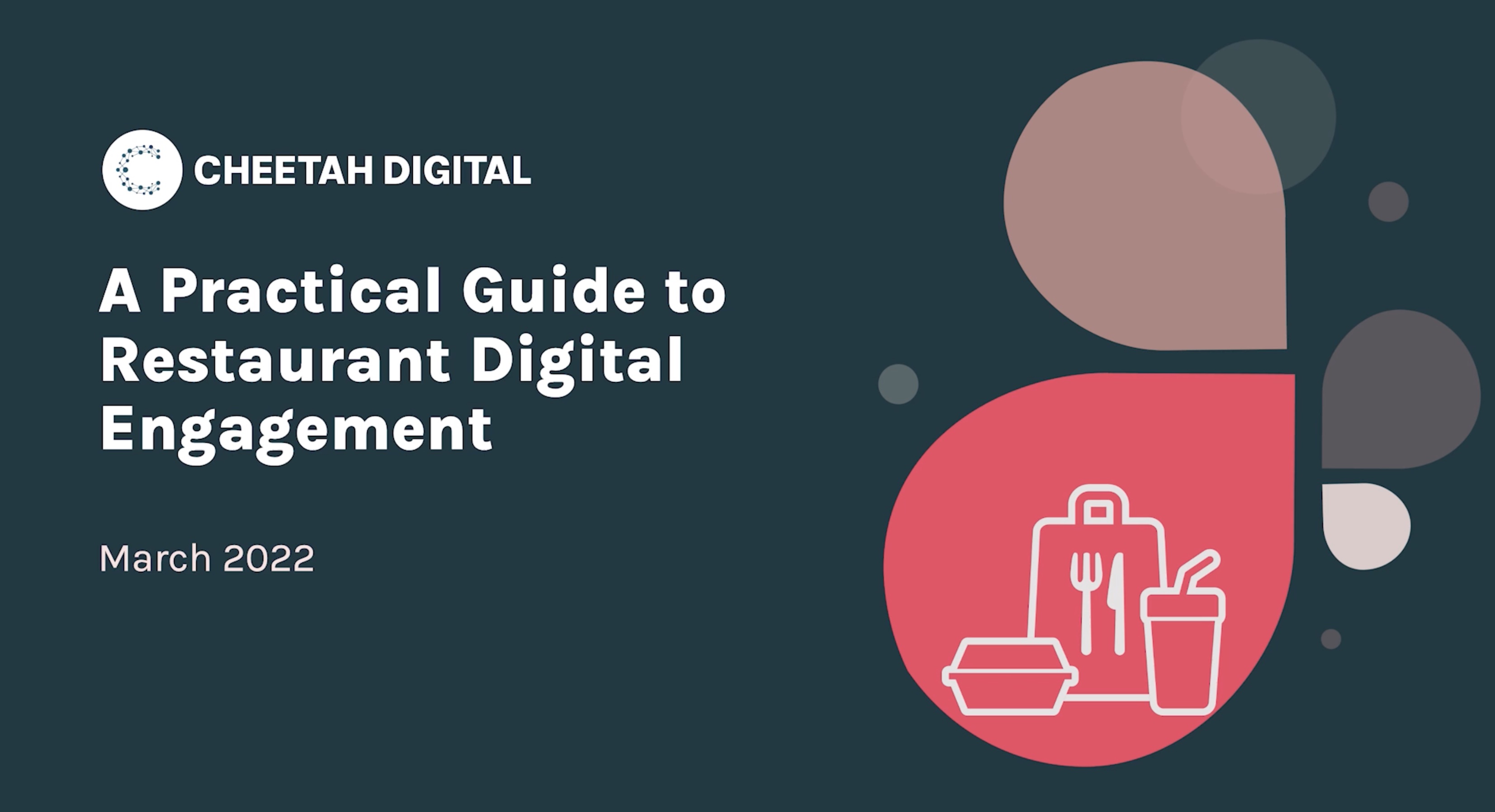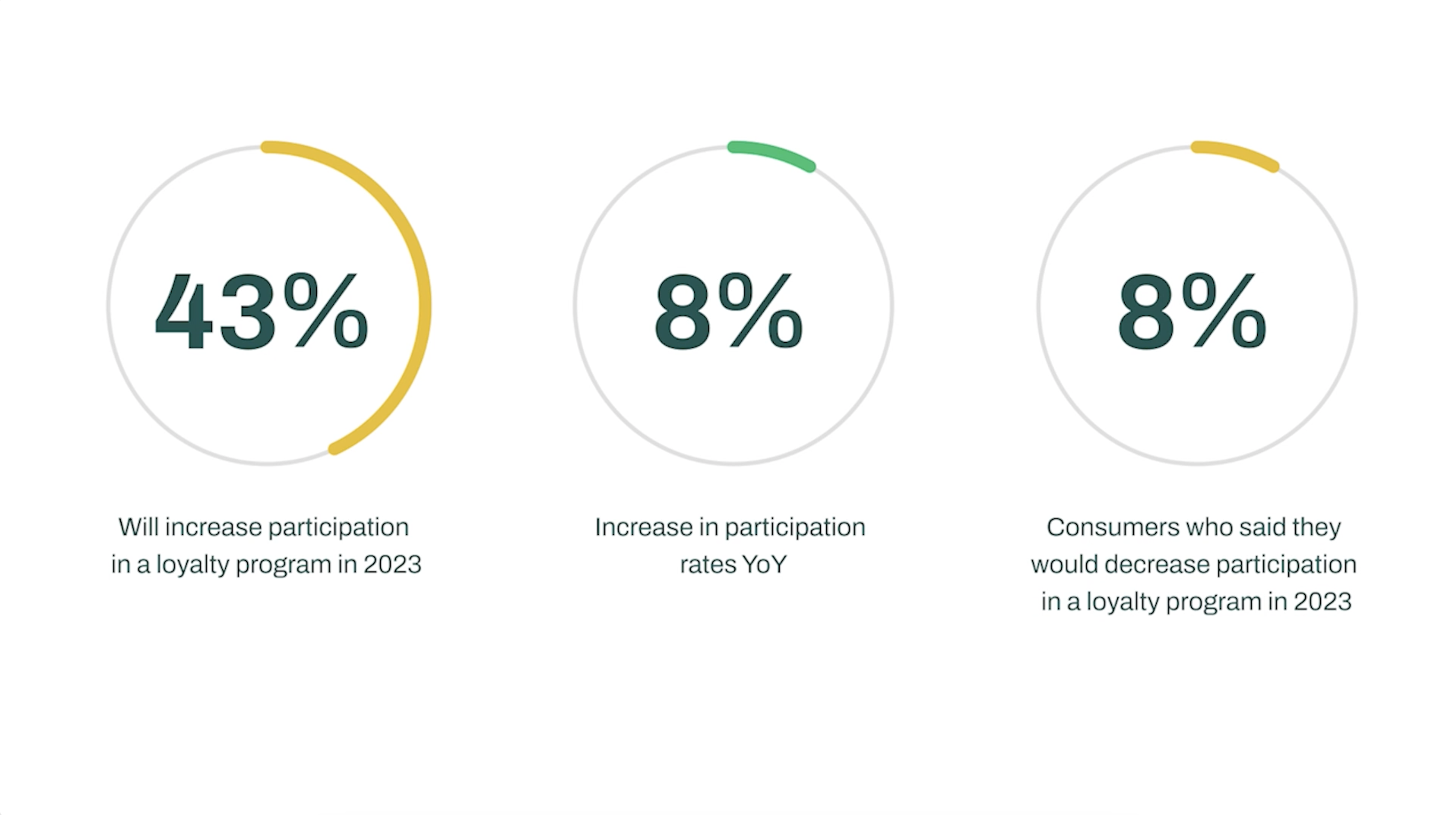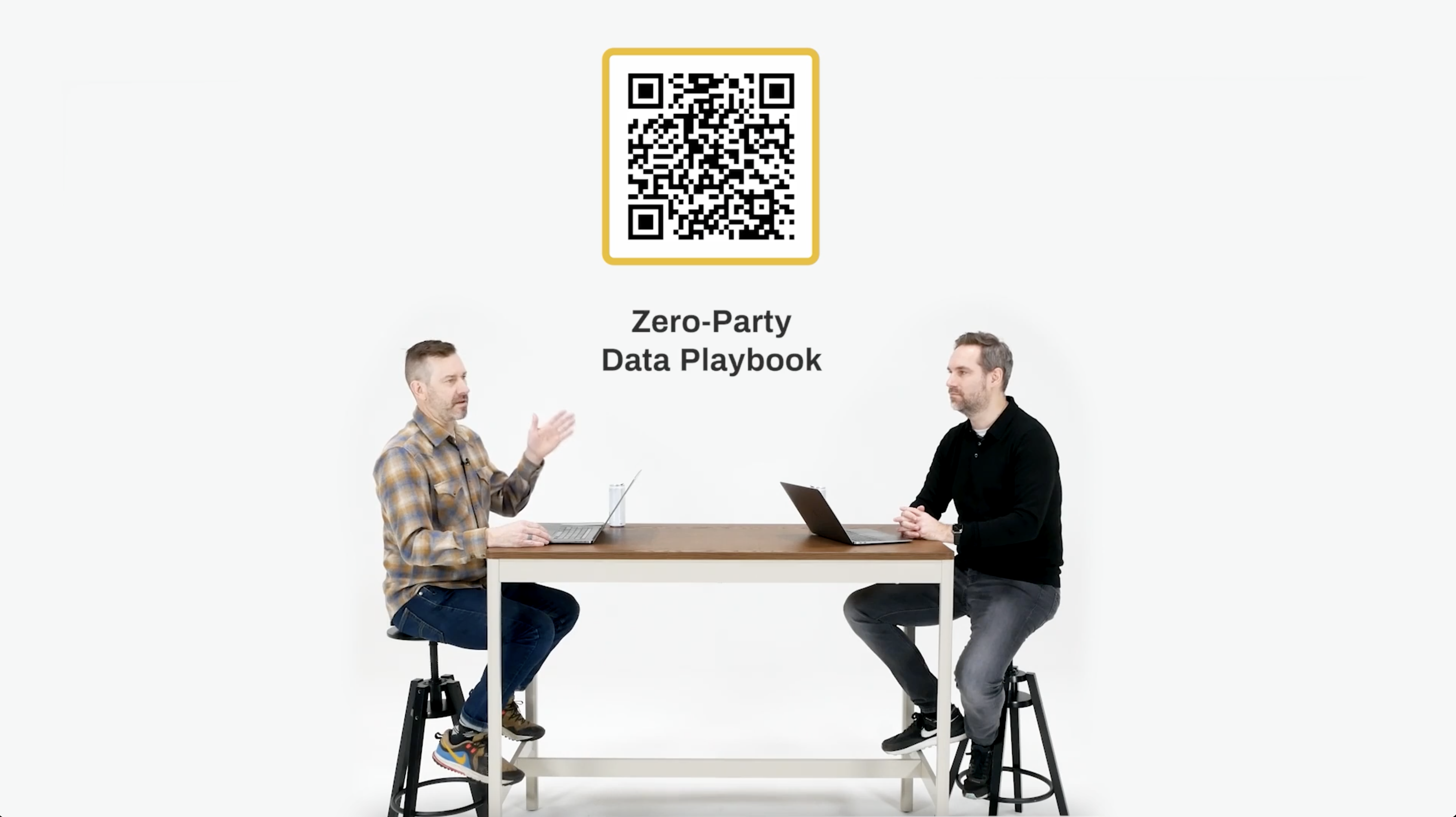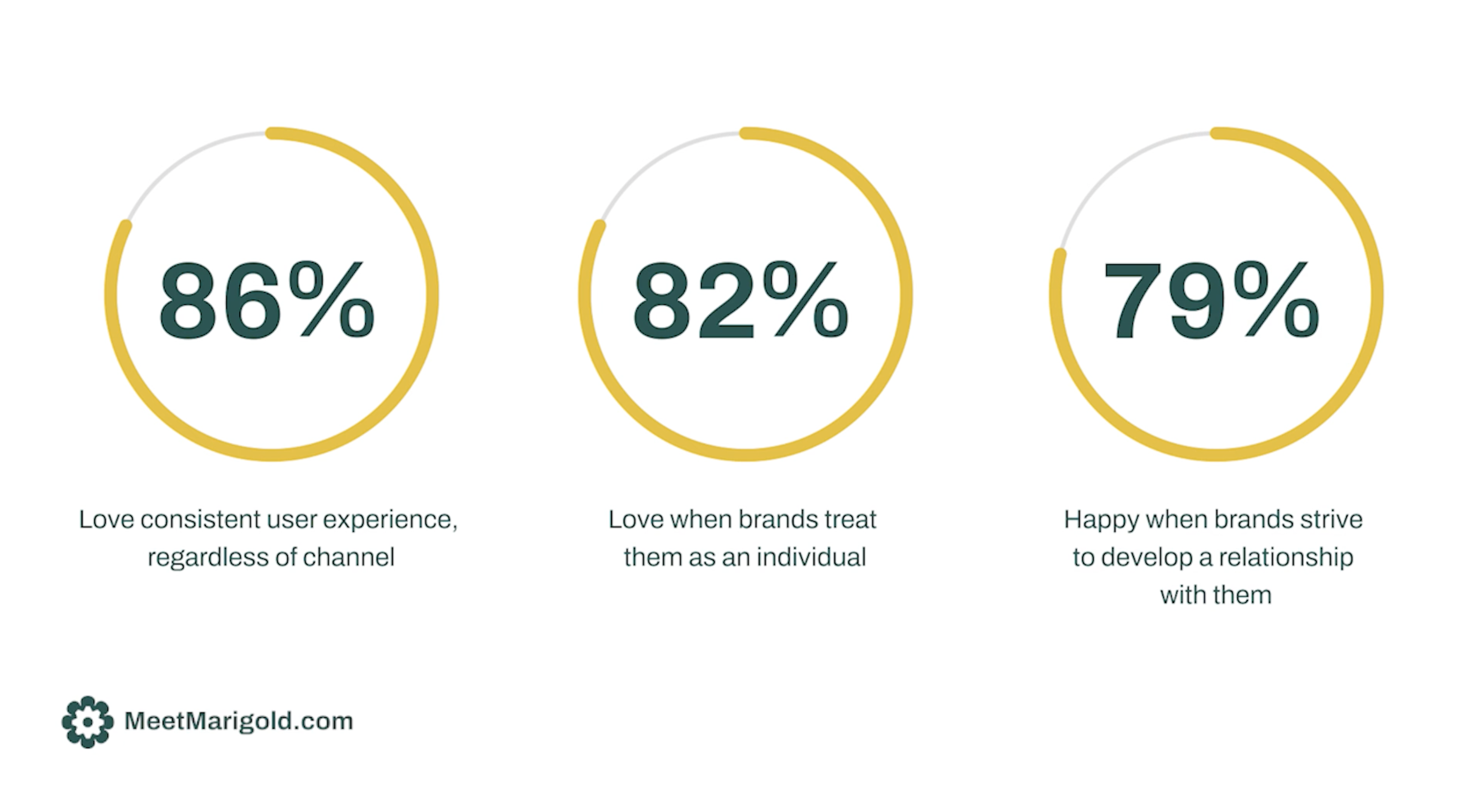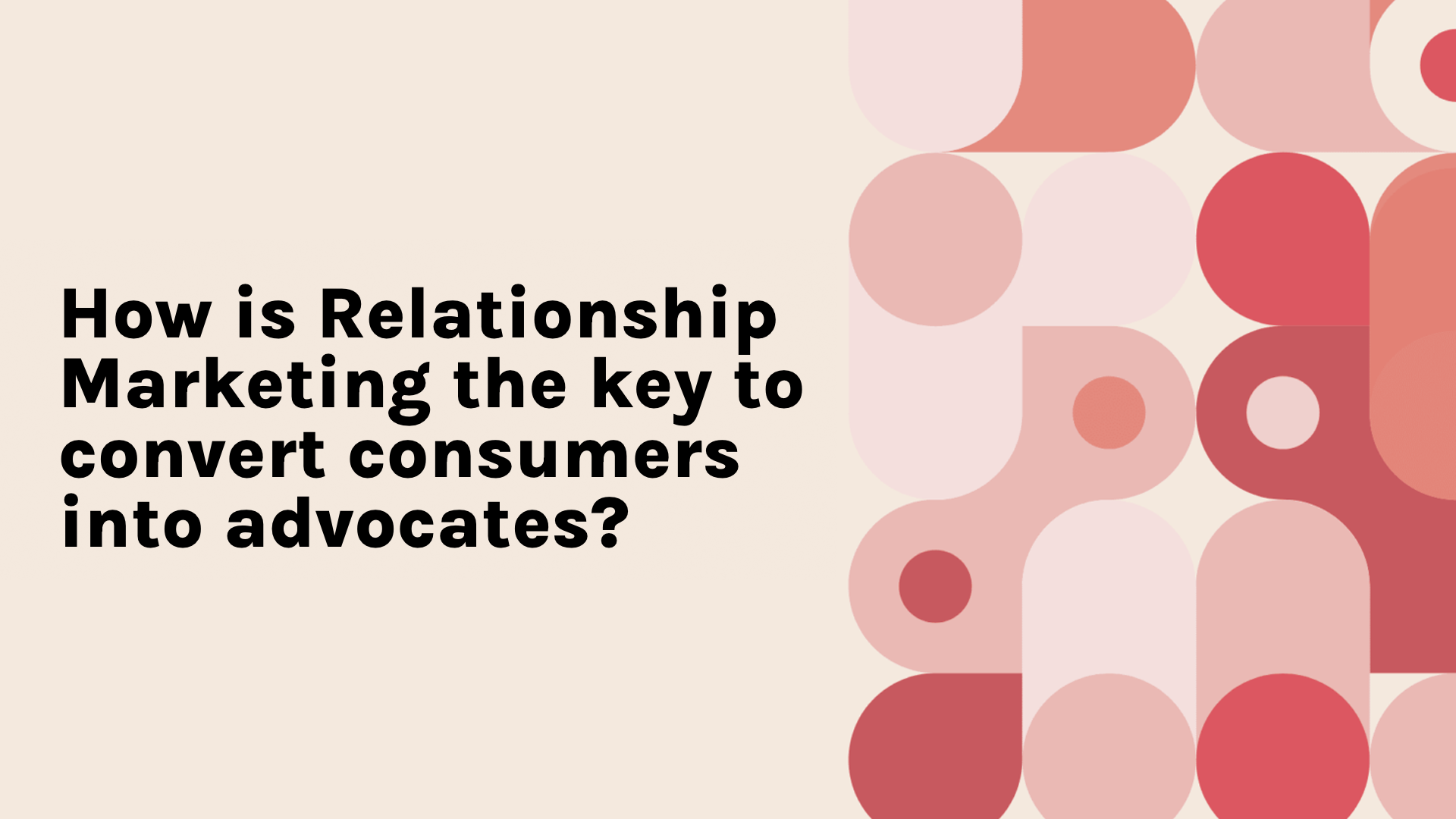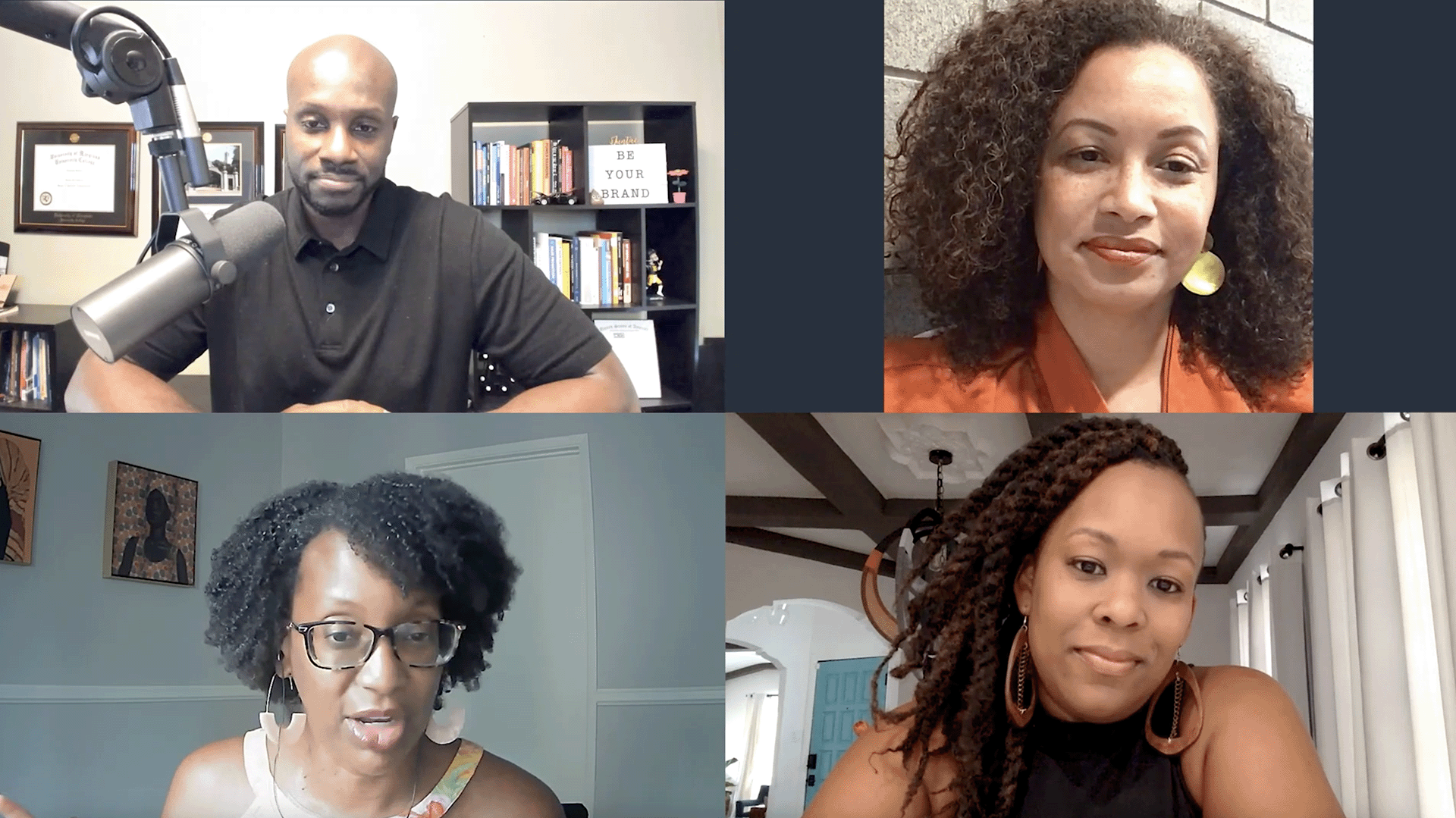A Practical Guide to Restaurant Digital Engagement
- 0.5
- 1
- 1.25
- 1.5
- 1.75
- 2
Kevin Sanders: Hi, and welcome to this Cheetah Digital webinar. Today's topic is a practical guide to restaurant digital customer engagement. Over the course of the next 30 minutes, we'll discuss important changes in customer behavior and how restaurants need to attract and retain these new customers, how restaurants can build a modern customer engagement capability, and the most important steps in doing so. We'll discuss a practical approach for building a modern marketing tech stack and we'll cover key strategies and best practices for delivering authentic and personalized customer engagements. My name is Kevin Sanders. I'll be your host in today's webinar. I am the Industry Solutions Director at Cheetah Digital for our restaurant business. A little bit about me. My background, I spent the past 14 years in the restaurant industry. I was head of marketing for a restaurant chain in the fast agile space, where I was responsible for both the national and local market marketing, but also the marketing technology systems. I was a CMO for a pair of restaurant technology companies as well in the digital ordering space. I was also a restaurant consultant working with several different restaurants and helping them with their marketing and technology capabilities. And so I've done a lot of consulting in the space and I'm pretty familiar with not restaurant marketing and the unique challenges of operating restaurant concept, but the changes that take place in the market as we move forward. Our agenda for today, we're going to start with understanding some of the changes that have been happening with respect to the customer experience in the restaurant space. We're going to talk about the keys to digital engagement today as a result of those changes. We're going to talk about the importance of personalization and spend a lot of time on this concept of personalization. And then we'll go into the practical steps of how you manage your digital transformation so that you can get to the point where you're doing these personalized customer engagements. And then at the end, I'll share some resources so you can learn more and gather more information on the topics. So these changes in customer behavior in the marketplace today, these past couple of years, as we all known have been pretty tough, right? Things have changed quite a bit, and so grounding ourselves in what has changed and where we are now, I think is probably a good way to get this going. What they heck happened these last few years? Right. What didn't happen? So you guys have all heard plenty by now about how COVID accelerated many of the customer shopping trends that were already happening in the marketplace. And that is certainly true, they certainly have, especially in the restaurant industry. COVID forced most people out of their normal patterns of behavior and into new ones, right? So they tried new restaurants, they tried new menu items. They tried new ways of ordering their meals, whether that was through digital channels or curbside or for delivery. There's some interesting research from McKinsey that shows that 75% of U. S. customers have tried new shopping behaviors as a result of COVID, 75%. And of those 75%, 73 to 80% of those people intend to keep those shopping behaviors that they've adopted over that time. So think about that, three in every four people tried something new and almost eight in 10 of those people intend to stick with those new patterns. We've never seen anything like that, certainly over the course of my lifetime, in the amount of disruption that's taken place in the marketplace so quickly. And what's interesting about this research, if you look at the top three reasons why customers say they made these changes, the first one was a value. Many people's livelihoods over the course of COVID were significantly disrupted, and so value became more important than ever. But availability was also a key factor. With so many restaurants shut down, either permanently or temporarily, customers may have been forced to try different places, to go to new restaurants because the restaurants that they were used to going to simply weren't available to them anymore. And of course, convenience, right? Convenience is always a driver for food acquisition. So it's no surprise that it maintained its importance. In fact, convenience up until COVID was always number one, really when it came down to how people pick the restaurants that they go to, when you separate out the food itself. So when I look at this idea of customer disruption, I think of it as a snow globe, right? Everything got shaken up, everything got tossed up in the air. And so the keys for restaurants now is to figure out how to capitalize on all this disruption and build lasting relationships with all these new consumers that are coming into your locations, before the snow settles, right, in this globe. And a key way of doing that is to get better at tailoring the customer experience to meet the needs of both your existing and all these new customers. And we'll talk about personalization, but that's really one of the key ways that we do that. Consumers have clearly demonstrated that they're willing to change their brand preferences and their buying behavior. And so we talk a lot about in the restaurant industry about this concept of loyalty, right? But I don't think you can assume anymore that your one's loyal consumers and your loyal guests will remain so in the future, because we just went through this period where everyone was forced to or chose to try new things. And so those familiar habits that we've all developed, those familiar considered set of brands and restaurants that we typically go to has expanded considerably. And now we've got a lot more choices, many of those are brand new. And now we have to take a look at, from a marketer's perspective, this idea that we can assume those customers aren't simply going to come back. And so I think this concept of loyalty, we need to think about that a little bit differently. And let's be honest, part of the reason that people have changed is because we haven't been necessarily particularly good at encouraging this loyalty, right? I love this stat here, 24% of diners are not loyal to given restaurant, because that brand did nothing to encourage their loyalty, even though they are a frequent guest. When you think about that, especially when we consider how the customer experience has changed this idea that folks are not going to be loyal or that at least a quarter of them are not perceiving your efforts to be driving loyalty to their business is just something that needs to be addressed. Right? We need to figure this out. And a lot of that comes down to how that customer experience has changed. So it used to be that the customer experience took place almost entirely within the four walls of your restaurant. Each engagement was personalized by somebody who could look that customer or that guest in the eye to anticipate their needs on the spot, perhaps even know their name. And so this idea of loyalty was earned from across the counter or at the table. This customer experience was being delivered right in front of the guest in an environment that you had a large amount of control over, but today an increasing number of your guests will never even enter your restaurant or engage directly with your staff. Their only engagement with your brand is, or will be through digital channels. Now off- premise orders make up a majority of most restaurants revenue. 67% of average sales come from orders placed outside the restaurant for consumption outside the restaurant, 67%, two of every three. This means now for a majority of your customers, the digital customer experience is the customer experience. An increasing number of your customers engagements are coming from digital and for these customers, it's exclusively the digital customer engagement. We've seen this happen in other industries, think, for example, in the banking industry, when was the last time you went actually into a bank? What percentage of your relationship with your bank comes from digital channels? Most of it? All of it? In the banking industry in particular, the digital customer experience is the only customer experience for most people. And as a result, many banks have become generally pretty good at that digital customer experience. So the question for you is how good are you at it? Think about it, are you putting as much time, energy, and resources against building your off premise customer experience as you are your on premise customer experience? Are you putting as much energy and resources into digital customer experiences as you are to non- digital customer experiences? If not, why not? Well, I can answer that question for you a little bit, it's not that easy, right? It's a challenge to figure out how to get this customer experience through digital channels to be a high quality one, because there's way too many tools to manage for one thing. There's also this concept or this idea of incomplete or fragmented data that we all suffer from in the restaurant space. It's hard to scale across all the touch points that we have. And finally, many of us struggle to manage the customer journey at all. In fact only 53% of marketers say that they have a few of their marketing channels connected, let alone all of them. So you're certainly not alone, but there's also some opportunities that a lot of this digital transformation provides us. One is that there are so many new ways to interact with customers through the various channels that are available in our marketing tech stack. And we also have the ability to gather just vast amount of data on consumer behavior, on the ways that our customers are engaging with us. For the first time really in the history of the space you, we are able to identify and track and understand our customers at a level that we've never been able to do. Additionally, a lot of their engagement preferences have changed. And so not only are there more ways to interact with them, but there are more ways that they prefer you to engage with them. The average number of touch points that a customer can use to engage with a brand, the average number is now six, six different touch points. So again, that creates a lot of opportunity to not only engage and create experiences for your customers, but also to help manage that digital customer experience in a way that can yield the maximum result for your business. In fact, your customer actually prefers to engage with you through these digital channels. There's a survey from 1to1 Media and Survey Monkey, they asked the question, would you stop doing business with a company that didn't have a strong digital presence? And more than half of consumers say that they either definitely would or would consider not doing business with companies that don't meet their digital expectations. So it's becoming a significant part of the way that we engage with customers in general, this idea of having this digital channel up and running and effective is just a critical part of going forward in the restaurant space. So how do we do that? Right. What are the keys to effective digital customer experiences? I talked earlier about how important it was for restaurants to capitalize in all this disruption in order to build these lasting relationships with their guests. We're used to building these relationships across the counter or the table, right? But now we need to figure out how to build these relationships through these digital channels. We need to understand our customers better, we need to know their needs, we need to meet their needs. The more effective we are at doing those things, the more effective our digital customer experience is going to be. To meet these needs, we need to better understand the needs in the marketplace. And knowing starts with customer intimacy. The customer industry is about how well we know and understand our customers, each customer and not just their needs, but also their history with us and their preferences too. The customer intimacy starts with a robust customer data gathering and synthesizing capability. Restaurants have a lot of different sources of customer data. It's a struggle to get them all together. The customer intimacy is about compiling, unifying, and analyzing all those different sources of information so that we can better understand our customers and craft digital experiences to more effectively meet their individual needs. A key way to build strong, lasting, and more loyal relationships is by improving our ability to tailor engagements and experiences to meet those specific needs of each customer. In other words, we need to personalize that digital customer experience, because we've reached the age of mass customization. Through the use of advanced decisioning technologies like machine learning, we're now able to manage customer journeys down to the individual level, to deliver products, messages, and offers and digital engagements that's best for each of our customers, based on their individual experience with our brand. Our guests are becoming more familiar with this concept of mass customization. We see this in other parts of our lives, the ability to create this customer experience, whether it's a product or an engagement, to be able to craft it and tailor it and customize it for exactly the way that we want it. It's happening more and more as you think about it in other industries that you do business with as a customer. And we do this in our restaurants, too, right? The ability to customize our orders or substitute items to personalize the food for each individual, we've been doing that for a long time. And we can do that same idea through our digital engagements, because mass customization of products has led to mass personalization of marketing. Think about how we as marketers have evolved in the way that we think about and segment our customers for example. In the beginning, you can call it segmentation 1. 0, the target was everyone, right? We couldn't really do any targeting. So everyone got the same engagement, the same messages, the same offers. It was effectively a one to many marketing process. In version 2. 0, we started to develop these segments, right? We started to take our entire audiences into like groups and be able to segment our customers into these pre- defined group of similar customers so that we could begin to start tailoring the messages and the offers to at least these larger groups. And this was a one to some marketing approach. And finally, we've reached the point where we can drive that segmentation down to the individual guest level, to customize each message and each offer to each customer. And we can do this at scale again, using these advanced data management technologies like advanced decisioning and machine learning capabilities that are in the marketplace today. So we now can do one to one marketing, and this is what we call personalization. And some brands are getting pretty good at it, right? The most digitally progressive brands, both inside our industry and outside of our industry are increasingly delivering these personalized customer experiences. And that raises the bar, that raises customer expectations, and it effectively raises the bar for the rest of us. And unfortunately it's left many of us scrambling to catch up, because as far as your guests are concerned, if Amazon can do it or Starbucks can do it well, why can't you? And so is increasingly becoming table stakes, this idea of tailoring and customizing experiences for our guests. I'm not saying it's fair, I'm just saying it's there. And so the good news is that the same marketing technologies that these brands are using to deliver these more relevant engagements is also available to us, it's also available to you. So we can do the same things that they are in figuring out how to get more personalized in our experiences. So what actually is this idea of personalization? How do we define it? Lots of people talk about it, it's a really misunderstood concept because it's being thrown around so often and applied to so many different places. And a big part of that is because personalization, isn't one thing, right? Personalization exists on a continuum. You can personalize just one aspect of your customer experience. For example, simply adding someone's name, for example, to an email, that's personalization, it's pretty basic, but it's still personalization. And that can go all the way up to the fact that you are personalizing the entire customer experience. And by the way, if you want to gauge where you are in this personalization journey, we've developed a Customer Engagement Maturity Assessment. It's a handy little tool to help you assess where you are at in this customer engagement journey. With specific recommendations for building the modern capabilities needed to move along that continuum. You can access that on our website, using the QR code right here on this page. And I'll also show this to you again, near the end of the webinar, so if you can't grab it now, you can certainly stop later and grab it then. But it's a helpful little tool to level set where you are today and giving you some ideas of how you move along this continuum. The question I always get from people is does it work? Is this idea of personalizing experience, it seems like a lot of work, does it actually yield results? And the answer is it absolutely does. Today we're seeing on average 20% increases in lift, when you begin to customize and personalize experiences. 20% is the average, some are getting much higher than that. We're also getting higher conversions of shoppers, 80% of shoppers are more likely to buy from a company that personalizes their experiences. 80%, let that sink in a little bit, 80% they're more likely to buy from you, if you personalize your experiences. And 78% of consumers have chosen, recommended or paid more for a product or services, because it was personalized. Those are good numbers. They're only going to increase as we move forward. On the downside, 74%, almost three and four of consumers say that they get frustrated when the content is not relative to meet their interests. So it's quickly becoming a situation where we have to do this personalization. Again, because customer expectations have increased so much and so many of our competitors are doing it. In fact, Gartner found that the ability to respond in real time with personalized offers can yield a 10X increase versus traditional campaigns. Even just delivering more personalized offers can produce a five X lift in campaign performance and who doesn't want that. So how do we begin to personalize these things? How do we begin to create these personalized digital customer experiences? Well, the first thing you need to understand is that personalization isn't a product or a platform that you buy, personalization is a capability that you develop. It's a level of marketing technology sophistication that you need to achieve in order to be able to tailor these engagements and experiences down to the individual customer level. And so it's about assembling a marketing tech stack that provides us with the things that we need in the ways that we need them, such that we're able to understand our customers needs and deliver against those needs, in real time, at the point of decision. There's a process that we use, it's the path to personalization, it's the step, it's the practical application of how do you do that? And the thing that you need to do is in order to get all these systems working, to allow you to begin to design, orchestrate these customers journeys, we need to take a certain number of steps. And the first step is systems integration, the idea that we need to get our individual systems working together in a way that allows us to effectively deliver these engagements and experiences through our marketing channels. And the first step in that process is to integrate the core technologies of our marketing communications stack. So our core customer engagement technologies are our data management capabilities, our offer management capabilities, and our messaging capabilities. These are the big three. So you need to get your data, your offers, and your messaging, all working together seamlessly. Now you can have different vendors for each of these, as long as you've integrated them well in a way that allows them to operate seamlessly together, or you can have them all natively integrated into a single platform, like the Cheetah Relationship Marketing platform we've built. But it's critical that we get our data, our offers, and our messaging all aligned and working cohesively. Once we get that, the next step is we can begin to start thinking about journey orchestration. Once we get our core technologies seamlessly integrated, it allows us to start working to begin to design and orchestrate those various customer journeys that we want in the marketplace. So segmenting the audiences and delivering the right offers and the right messages to each of these segments, no matter how large those segments are. See once we get our core technologies integrated, that integration allows us to manage the audiences and the campaigns and the triggers for all of those messages and offers to be able to deliver those in a way through our engagement channels. And the third step in the process is again, achieving this realtime personalization. Many brands today, stop at that journey orchestration stage, but the holy grail is when you can imply these advanced capabilities, like again, like machine learning and realtime decisioning to achieve that one to one personalization at scale, where each customer travels a unique journey based on their singular experience with your brand in real time. That's where brands achieve that supercharged performance that drives the ROI, the emotional loyalty, and allows them to really maximize the customer lifetime value of each individual guest. It's getting all your systems integrated, creating the journeys and then delivering those in real time, again, across the various touch points with the unique and individual offers and messages and experiences that each guest needs to move forward. We're seeing just tremendous lifts when you can get to that level of real time personalization. Now here's some use cases around what that looks like, what are the tactics involved? What are the areas you should focus on? When we think about getting to this level of orchestration of these real time interactions. And the first one is a bucket around this idea of how you listen to your customers, right? How you learn their needs, how you understand what those needs are and how they're engaging with your brand. So things like our ability to build these robust and enriched customer profiles or identify the folks that are engaging with us through those individual channels, whether they're browsing products or whether they're placing orders. How do we remember the orders that they don't complete so that we can engage with them for an uncompleted journey, for example? And how do we begin to progressively profile these customers throughout that engagement experience so that we can build out what we know about them? Another bucket of these personalization capabilities is around sharing the content, right? How do we begin to ensure that new customers get onboarded efficiently? How are we able to welcome them into the program and help them understand the program itself? Whether it's a loyalty program or another campaign or program that you might be running. How do we get these personalized offers delivered through these channels and these personalized messages delivered through these channels? There's another bucket around once we get established that relationship, how do we stay connected? So again, how do we do win backs for folks that we haven't heard from for a while? How do we celebrate their anniversaries and remind them how much we appreciate them? How are we able to re- target them when they're perhaps engaging with us through a channel, but have moved on? How do we reengage with them around that? And how do we deliver to them things like back in stock alert? So if an LTO or a particular product is no longer in the market and comes available again, how do we let them know those types of things? And there's a broader bucket around this idea of how do we just drive that relationship even deeper? How are we able to look at predictive behaviors in the marketplace? How are we able to deliver these intelligent offers through our various channels? How do we look at things like propensity? So people are, if you buy X, you're more likely to buy Y and how do we understand that and be able to use that as well as propensity to churn? How do we win back lapsed users? And so once we've developed this ability to be able to do real time personalization, once we've developed these capabilities, we can start to focus on orchestrating these customer journeys to deliver, for example, next best offers. So if a customer does X, you deliver offer A, but if they do Y then they get offer B, and so on. But we can also push this further into things like next best journeys and next best experiences to guide customers through advanced more sophisticated digital experiences. Once we develop that personalized customer engagement capability, the opportunities are endless. With what little time we've got left today, I wanted to pass along some information because we were only able to just scratch the surface on this concept of personalization and how we develop that personalization capability. At Cheetah, we have all the technologies, the services, the strategy, and the support you need to help you along this journey. And a couple of resources that I pulled together are here on the page. Many of these are on our website, if you haven't been to our website, there's a tremendous amount of information on there about not just personalization, really all of the elements of customer engagement. We have a ton of resources on the website. Here as I mentioned earlier is the Customer Engagement Maturity Assessment. And so you can click down on it on that QR code and go directly to that part of our website, and really take that assessment to get a sense of where are you now? What are you good at? What do you have in terms of capability and what you might need to focus on next? And again, to learn more about Cheetah, you can go to our website, you can use this QR code to learn all about Cheetah's digital customer relationship marketing platform, and how other restaurant brands in the marketplace leverage our platform to do all the things I've talked about here today. And so that's the time I've got, I appreciate your attention. Thanks for attending this webinar and I hope you found it really useful. If you'd like to reach out to me, here's my contact information down here. You can reach me through the website or certainly through LinkedIn or on Twitter, if you like, but be happy to meet with you and discuss how, again, Cheetah can help you along this journey as we've helped a number of other restaurant brands in the marketplace. So thank you very much. I hope you enjoyed the seminar.
DESCRIPTION
In this webinar, Kevin Sanders, long time Restaurant Solutions Expert here at Cheetah Digital, shares thoughts on important changes in customer behavior and how restaurants need to attract and retain these new customers, how restaurants can build a modern customer engagement capability, and the most important steps in doing so. He also discusses a practical approach for building a modern marketing tech stack and covers key strategies and best practices for delivering authentic and personalized customer engagements.
Today's Guests


